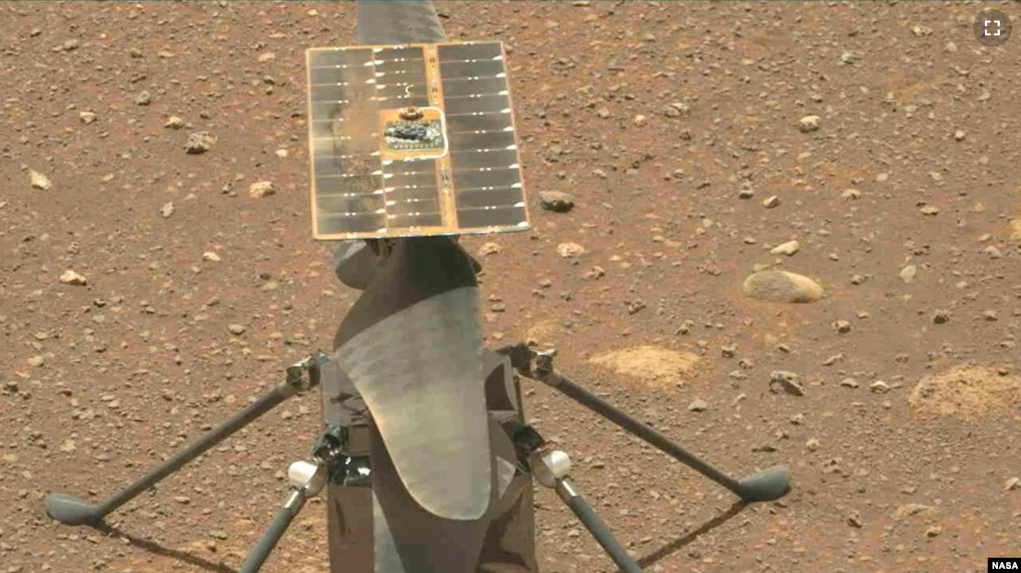NASA is launching two more small helicopters to Mars as part of its effort to return Martian rocks and soil samples to Earth.
Under the plan announced in late July, NASA’s Perseverance rover will transport soil samples to a rocket. The rocket will then launch the collected material off the red planet in about 10 years.
The two helicopters being built will help NASA’s Perseverance rover, which is already on Mars. The helicopters will load samples onto the return rocket if NASA’s Perseverance rover breaks down.
Perseverance already has gathered 11 samples with more rock drilling planned. The most recent sample, a sedimentary rock, holds the greatest chance of containing possible evidence of ancient Martian life, said Arizona State University’s Meenakshi Wadhwa. Wadhwa is chief scientist for the retrieval effort.
There’s “a diversity of materials already in the bag, so to speak,” she said, adding that researchers are very excited about bringing the materials back to Earth.
The helicopters will be modeled after NASA’s successful Ingenuity. It has made 29 flights since arriving with Perseverance on Mars early last year. The helicopter weighs just 1.8 kilograms. The new versions will have wheels and arms.
NASA officials said Perseverance’s strong performance on Mars has led them to change their plan to launch a separate vehicle.
Jeff Gramling, director of NASA’s Mars sample return program, said the new path forward is simpler. Each helicopter will be designed to lift one sample tube at a time, making several trips back and forth.
“We have confidence that we can count on Perseverance to bring the samples back and we’ve added the helicopters as a backup means,” Gramling said.
NASA is working with the European Space Agency on the retrieval mission. If all goes as planned, as many as 30 samples would launch from Mars in 2031 and arrive back at Earth in 2033.
Scientists will then study the samples in laboratories. They will be looking for signs of microbial life that may have existed on Mars billions of years ago when water flowed on the planet.
I’m John Russell.
Marcia Dunn reported on this story for the Associated Press. John Russell adapted it for VOA Learning English.
_____________________________________________________________________
Words in This Story
sample – n. a small amount of something that gives you information about the thing it was taken from
sedimentary – (adj. science) made from material that sinks to the bottom of a liquid : made from sediment
retrieval – n. the act or process of getting and bringing back something; the act or process of retrieving something
tube – n. a container that is shaped like a tube which is closed at one end and that is used especially in science experiments
confidence –n. a feeling or belief that something is true or that it is likely to happen
